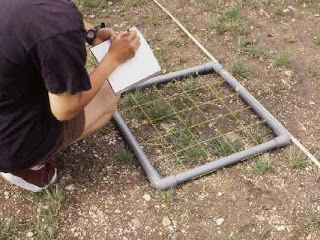Pyramid of Energy:
Only 10% of energy from each trophic level would be transferred to the next trophic level. For example, the grass has 100 kJ of energy, then it's eaten by cow, and the cow is eaten by a tiger. The cow would get only 10kJ from the grass, and the tiger would get only 1kJ from the original 100kJ.
This is because energy can be lost through:
- Respiration (for movement, reproduction, digestion, etc.)
- Faeces - when the predator cannot digest certain substances of its prey, for example, a mouse cannot digest the cellulose of the plant and therefore would be lost in the form of waste or faeces.
-------> DEAD------> decomposers











